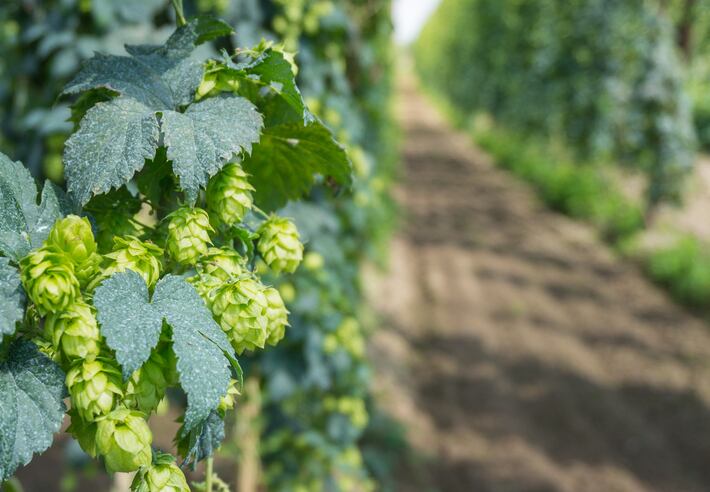Hopsteiner has been producing hops since 1845 to enhance flavor, aroma, consistency and flexibility for brewing as well as non-beer applications. In the twenty-first century its innovative hops products and brewing techniques have changed the way people think about hops and their uses.
Using extraction technology
Apart from its few dozen basic hop varieties like Apollo, Lemondrop and Brewers Gold, Hopsteiner develops products like pellets, powders and extracts for its customers. BeverageDaily spoke with John Paul Maye, technical director at Hopsteiner, about some of its most innovative breakthroughs.
“A lot of people don’t appreciate that the hop industry is the second largest user of CO2 extraction technology,” Maye said.
The coffee and tea industry is the number one user of the process, which extracts the essence of plants with CO2 as a liquid solvent, with hundreds of millions of pounds of tea and coffee per year that can be extracted in those plants. The hop industry uses roughly 10-15 million pounds per year in extraction capacity.
Hopsteiner has been researching the hop composition in new styles of beer like New England IPAs. Through the process of dry hopping, hop compounds can be seen in beer that normally haven’t been seen before.
Applying alpha acids
Alpha acids are a chemical compound found in hops that give hops its bitterness. Through the isomerization boiling process, iso-alpha acids are formed. The length of boiling time controls the bitterness of flavor, directly applied to the taste of the beer being brewed.
Maye explained that when Hopsteiner extracts hops with CO2, it’s typically the high alpha acid varieties. They are enriched through the process and result in a higher concentration than what is typical, especially useful for selling the beer as-is in places like Latin America and southeast Asia because of its stability at room temperature.
According to Maye, much of this and similar research was started in the 1960s and 1970s, but didn’t reach commercial application until the 1980s and worldwide use until the 1990s.
For example, the development of rho iso-alpha acids came from the reduction of iso-alpha acids to make a light-stable product. It allows the packaging of beer in clear or green bottles without the beer getting skunky.
Beer has been traditionally packaged in brown bottles because the iso-alpha acids are sensitive to light and the brown color acts as a barrier. When too much light gets in, the acids naturally bitter the beer.
Hopsteiner also has a Tetra Product, also known as tetrahydro iso-alpha acids. It’s light stable and can be used at a very low concentration, but is also helpful with enhancing the foam and lacing of beer.
Feedback for future innovation
In terms of non-beer applications, beta acids can inhibit bacteria growth during fermentation in molasses-based feedstocks. When molasses is diluted and yeast is added in, some type of antibacterial is usually also added to inhibit bacteria growth during the fermentation process.
According to Maye, antibiotics are a common antimicrobial used in a lot of fuel ethanol fermentation processes. Beta acids can be used in place of those antibiotics.
Hopsteiner also has a close relationship with its customers and spends a lot of its time researching and developing products that brewers are looking for.
“We give [brewers] free samples of our new experimental hop varieties for evaluation and tell them we’re looking at new varieties that are naturally resistant to powdery mildew and we breed for that,” Maye said.
“We have a very extensive breeding program. We plant 25,000 hop seeds a year and then test those little seedlings for resistance against powdery mildew. We educate [brewers] on our program, what varieties we’re looking to develop and then we get feedback from them.”

